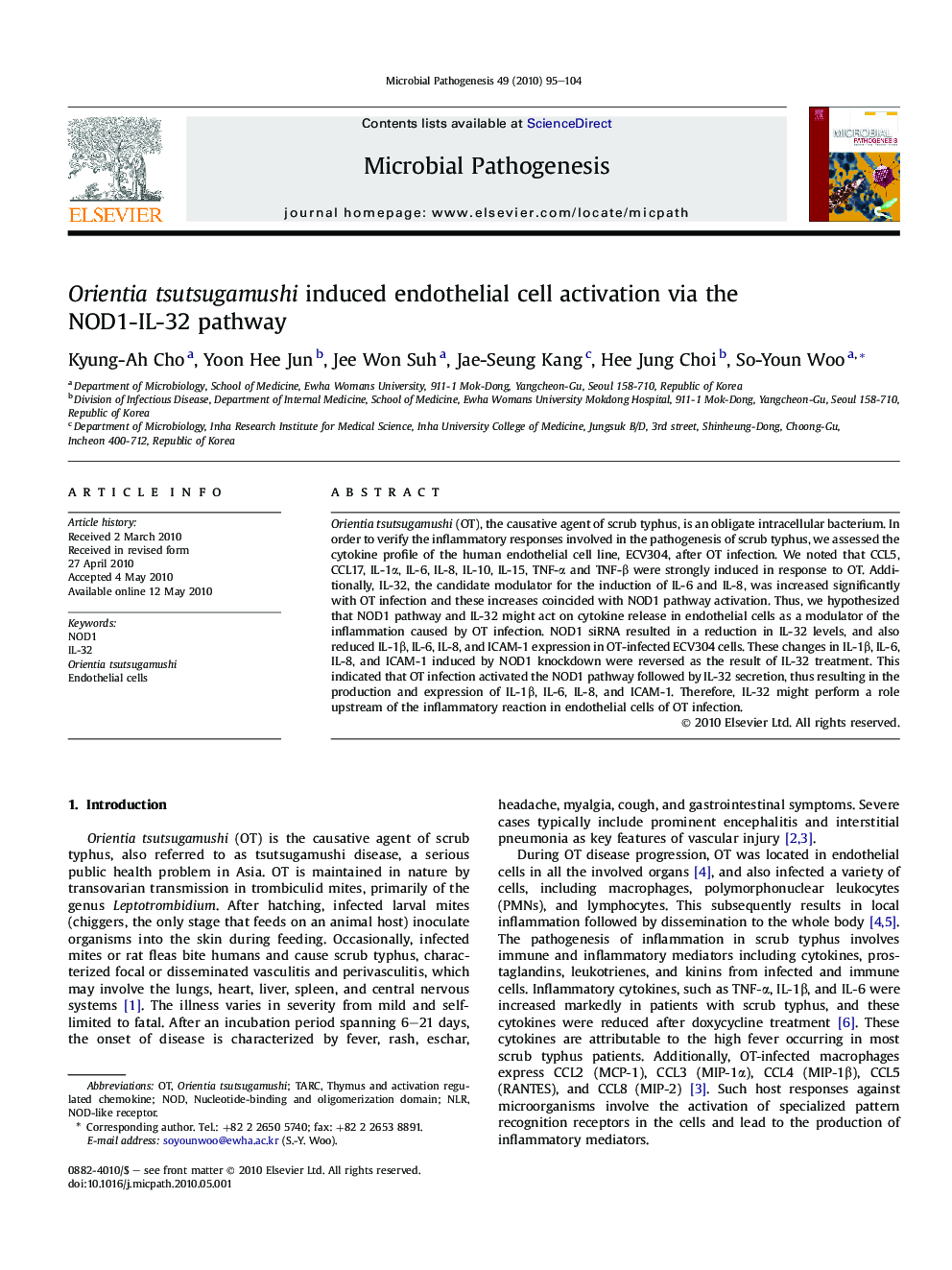| کد مقاله | کد نشریه | سال انتشار | مقاله انگلیسی | نسخه تمام متن |
|---|---|---|---|---|
| 3416885 | 1225158 | 2010 | 10 صفحه PDF | دانلود رایگان |

Orientia tsutsugamushi (OT), the causative agent of scrub typhus, is an obligate intracellular bacterium. In order to verify the inflammatory responses involved in the pathogenesis of scrub typhus, we assessed the cytokine profile of the human endothelial cell line, ECV304, after OT infection. We noted that CCL5, CCL17, IL-1α, IL-6, IL-8, IL-10, IL-15, TNF-α and TNF-β were strongly induced in response to OT. Additionally, IL-32, the candidate modulator for the induction of IL-6 and IL-8, was increased significantly with OT infection and these increases coincided with NOD1 pathway activation. Thus, we hypothesized that NOD1 pathway and IL-32 might act on cytokine release in endothelial cells as a modulator of the inflammation caused by OT infection. NOD1 siRNA resulted in a reduction in IL-32 levels, and also reduced IL-1β, IL-6, IL-8, and ICAM-1 expression in OT-infected ECV304 cells. These changes in IL-1β, IL-6, IL-8, and ICAM-1 induced by NOD1 knockdown were reversed as the result of IL-32 treatment. This indicated that OT infection activated the NOD1 pathway followed by IL-32 secretion, thus resulting in the production and expression of IL-1β, IL-6, IL-8, and ICAM-1. Therefore, IL-32 might perform a role upstream of the inflammatory reaction in endothelial cells of OT infection.
Journal: Microbial Pathogenesis - Volume 49, Issue 3, September 2010, Pages 95–104